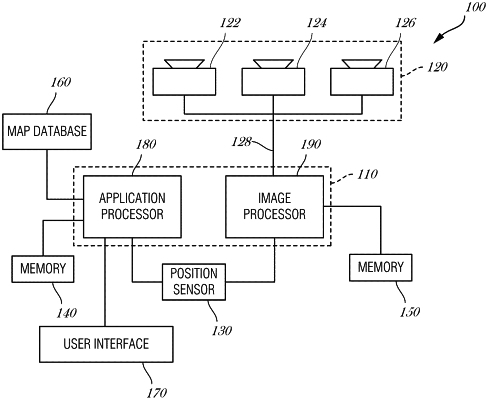| CPC G06V 20/588 (2022.01) [B60W 40/06 (2013.01); G06T 7/50 (2017.01); B60W 2420/42 (2013.01); G06T 2207/20081 (2013.01); G06T 2207/20084 (2013.01)] | 25 Claims |

|
1. A device for modeling an environment, the device comprising:
a hardware sensor interface to obtain a sequence of unrectified images representative of a road environment, the sequence of unrectified images including an initial unrectified image, a previous unrectified image, and a previous-previous unrectified image; and
processing circuitry to perform operations including:
access the initial unrectified image, a warped previous unrectified image, a warped previous-previous unrectified image, wherein the warped previous unrectified image is based on a first best-fit homography between the previous unrectified image and the initial unrectified image, wherein the warped previous-previous unrectified image is based on a second best-fit homography between the previous-previous unrectified image and the initial unrectified image, and wherein the first and second best-fit homographies are based on a pinhole homography and rectification parameters for a lens used to capture the sequence of unrectified images;
provide the initial unrectified image, the warped previous unrectified image, and the warped previous-previous unrectified image to a trained network to produce a three-dimensional structure of a scene; and
apply the first or second best-fit homography to the three-dimensional structure of the scene to create a model of the road environment.
|